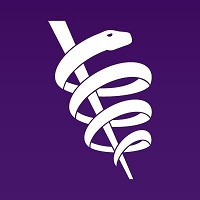 Updates to medicine’s common language reflect new technological and scientific advancements
Updates to medicine’s common language reflect new technological and scientific advancements
The American Medical Association (AMA) (@AmerMedicalAssn) announced the release of the 2019 Current Procedural Terminology (CPT®) code set. There are 335 code changes in the new CPT edition reflecting the CPT Editorial Panel and the health care community’s combined annual effort to capture and describe the latest scientific and technological advances in medical, surgical and diagnostic services.
“The CPT code set is the foundation upon which every element of the medical community—doctors, hospitals, allied health professionals, laboratories and payers—can efficiently share accurate information about medical services,” said AMA President Barbara L. McAneny, M.D. “The latest annual changes to the CPT code set reflect new technological and scientific advancements available to mainstream clinical practice, and ensure the code set can fulfill its trusted role as the health system’s common language for reporting contemporary medical procedures. That’s why we believe CPT serves both as the language of medicine today and the code to its future.”
Among this year’s important changes to CPT are code additions that reflect the tremendous potential of using connected health tools to better support clinicians in patient population health and care coordination services, and other novel delivery systems that are vital for improving the overall quality of health care.
These include three new remote patient monitoring codes that reflect how health care professionals can more effectively and efficiently use technology to connect with their patients at home and gather data for care management and coordination. Also, two new interprofessional internet consultation codes have been added to reflect the increasing importance of using non-verbal communication technology to coordinate patient care between a consulting physician and a treating physician.
“The AMA has urged the Centers for Medicare and Medicaid Service to adopt the new codes for remote patient monitoring and internet consulting and designate the related services for payment under federal health programs in 2019,” said Dr. McAneny. “Medicare’s acceptance of the new codes would signal a landmark shift to better support physicians participating in patient population health and care coordination services that can be a significant part of a digital solution for improving the overall quality of medical care.”
Additional CPT changes for 2019 include new and revised codes for skin biopsy, fine needle aspiration biopsy, adaptive behavior analysis, and central nervous system assessments including psychological and neuropsychological testing. Broad input from practicing physicians, medical specialty societies and the greater health care community was considered by the CPT Editorial Panel to produce the latest practical enhancements to CPT that reflect the coding demands of the modern health care system.
New CPT category I codes are effective for reporting as of Jan. 1, 2019. To assist the health care system in an orderly annual transition to a new CPT code set, the AMA releases each new edition four months ahead of the Jan. 1 operational date and develops an insider’s view with detailed information on the new code changes.
The AMA invites the health care community to learn more about the significant changes to CPT codes and descriptors by attending the CPT and RBRVS 2019 Annual Symposium in Chicago from Nov. 13-16, 2018. For additional information and registration, please visit the AMA website.
The 2019 CPT codes and descriptors can be imported straight into existing claims and billing software using the downloadable CPT 2019 Data File. The file contains the updated code set’s complete descriptor package, including official descriptors for consumers and physicians, and the complete official CPT coding guidelines.
About the American Medical Association
The American Medical Association is the powerful ally and unifying voice for America’s physicians, the patients they serve, and the promise of a healthier nation. The AMA attacks the dysfunction in health care by removing obstacles and burdens that interfere with patient care. It reimagines medical education, training, and lifelong learning for the digital age to help physicians grow at every stage of their careers, and it improves the health of the nation by confronting the increasing chronic disease burden.
About Current Procedural Terminology (CPT®)
Trusted for more than 50 years, the Current Procedural Terminology (CPT) code set drives communication across health care by enabling the seamless processing and advanced analytics for medical procedures and services. AMA CPT is the language of medicine today and the code to its future. Constantly updated by the AMA CPT Editorial Panel with insight from clinical and industry experts, the CPT code set reflects the latest innovations and helps to improve the delivery of care.
